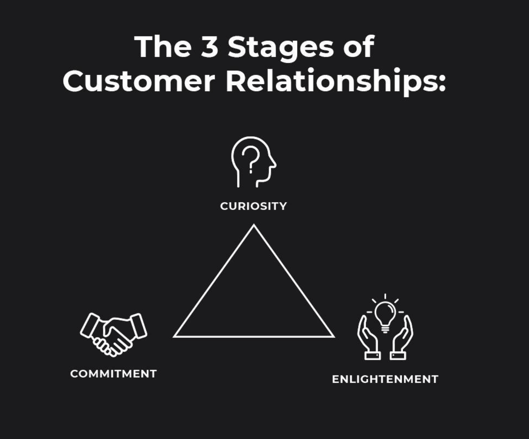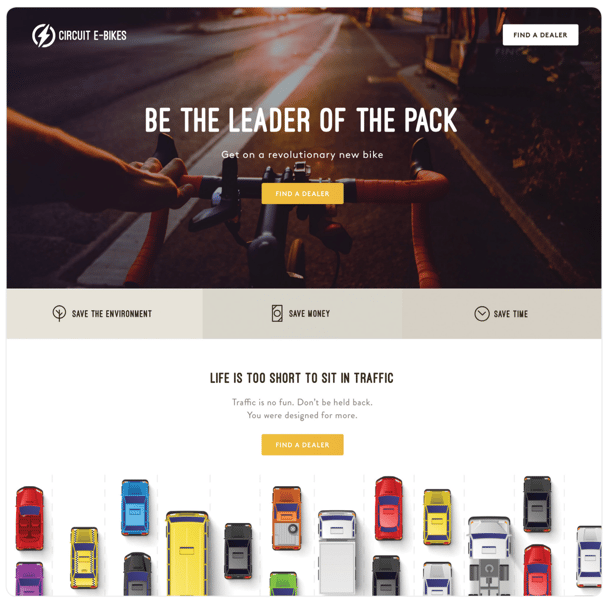The 5 Parts of an Effective Sales Funnel
Published: Apr 19, 2024
Marketing should be easy and it should work. But most business leaders struggle with marketing. They spend a ton of money on websites that don’t work. They need to send sales emails, but have no idea what to say. When leads slow down, they’re at a loss for how to get them going again.
The answer to these problems is a sales funnel. No matter the size of your business, it’s the easiest way to grow. It works for any business, no matter what you sell or who your customers are.
Here’s why a sales funnel will benefit your business:
- They’re inexpensive.
- You can create them on your own.
- No more guessing if you hire a marketing agent. Now you know what the deliverables should be.
- They get an enormous return.
- They win over clients without being pushy.
Once you learn the components of an effective sales funnel, you’ll have everything you need to create marketing collateral that grows your business.
Keep in mind, the real power of a sales funnel comes from using it fully. The more you use all parts of the funnel, the more your business will grow.
3 Phases of Building a Relationship With Your Customers
Before we dive into building the funnel, it’s important to note that all relationships move through three phases. A sales funnel builds relationships with your customers over a period of time and it does that by obeying the three phases of relationship: curiosity, enlightenment, and commitment.

Think of it like a dating relationship. If you ask someone to marry you after the first date... they're probably going to say no. And you probably won't get a second date.
Same thing with our marketing. If we ask for a commitment before the customer is ready, we will come off as pushy and demanding. A sales funnel helps to make sure you don't rush things and scare your customers away.
Let's take a closer look at the three phases of building a relationship with your customers:
Curiosity
The first phase is about capturing your customer's attention. At this stage, your only job is to spark their interest. Let them know what problem you can solve or what sets you apart. Don’t overwhelm them with too much information or pressure. Play it cool! Just like when you meet someone new, you want to make a good first impression and leave them wanting to know more about you.
Enlightenment
Now that you've caught their attention, it's time to help them understand what you're all about. This is like getting to know someone better. For your customers, this means giving them more information about what you offer and inviting them into a story. Show them exactly how your product or service can make their lives better or solve a problem they have.
Commitment
This is the final stage when your customer decides to buy from you. Just like in a real relationship, you can't rush this stage. If you push too hard for a sale, you’ll come off as desperate. Nobody wants that! By this stage, you should have established why your brand is the right choice. Focus on making the purchasing process as smooth as possible, offering assistance if needed.
A well-designed sales funnel respects these phases, guiding customers through each stage at a comfortable pace. It's about knowing when to inform, when to listen, and when to encourage the next step.
The 5 Parts of a Sales Funnel
A sales funnel consists of five parts, each designed to guide potential customers from awareness to action.
Before you begin, it’s important to clarify your brand message. It’s the foundation upon which your funnel is built. It communicates your value proposition clearly and compellingly, making sure that every part of your funnel is aligned with your overall marketing goals.
Now, let's break down the five parts of an effective sales funnel:
PART 1: One-liner
Think of the one-liner as your elevator pitch. It’s a concise, powerful statement that helps people realize why they need your product or service. A compelling one-liner is memorable and positions your brand effectively in the minds of your audience. It's that initial spark of interest that draws people in.
Formula to create a captivating one-liner:
- PROBLEM: What is the main pain point you solve for your customers?
- PRODUCT: What product or service do you offer that solves that problem?
- RESULT: What positive result will your customer experience if they buy your product or service?
Use these answers to create one or two simple sentences that will communicate your brand message.
And remember, don’t over-promise. Any result you state in your one-liner should be something you’re able to deliver.
Here’s an example of a good one-liner from an E-bike retailer:
With 110 people moving to Nashville every day, people are wasting more and more time sitting in traffic. With a Circuit E-Bike fitted just for you, you’ll get to work faster and add hours back to your day.
When you implement your one-liner, your business will transform. Make sure you and your team memorize it. Display it wherever you can: email signatures, social media bios, About Us section on your website, or even paint it on your walls!
PART 2: Website
Your website guides customers through the curiosity phase. A great website is clear, concise, and designed to turn visitors into customers. It should be a sales machine for your business.
Here’s where a lot of businesses go wrong: an effective website is not just about stunning design. It's about messaging, ease of use, and a clear call to action (CTA). Let's look at an example website from our fictional E-bike retailer:

If you’d like in-depth guidance on this step, we’ve put together the Ultimate Website Template to help you create a website that drives sales and generates leads. You can access it for free here.
PART 3: Lead Generator
Your lead generator guides your customer through the enlightenment phase of the relationship. This part is all about value exchange and reciprocity. You offer something of value for free (e.g., an ebook, a PDF, a discount code) in exchange for your visitors' email address.
A good lead generator solves an immediate problem for your customer and positions you as the guide who can help them. This not only provides them with something useful but also opens the door for further communication, turning website visitors into leads.

PART 4: Nurture Campaigns
Once you have leads, it's crucial to keep them engaged. An email nurture campaign guides your customer through the commitment phase of the relationship.
An email nurture campaign is a series of emails, delivered regularly, that offer value to your customers. They might contain tips, weekly notifications, or valuable content you’ve curated. You’re dropping into their inbox for a quick hello, showing that you’re here and you’re reliable.
These campaigns are where your brand message continues to shine, building trust and establishing your brand as their guide.
PART 5: Sales Campaigns
Now it’s time to close the deal! An email sales campaign is more direct in their approach, focusing on creating a sense of urgency and highlighting the benefits of making a purchase now, not later.
A typical sales campaign usually consists of 5-8 emails that highlight the benefits of your product or service and help the lead overcome specific objections that might be holding them back from purchasing. Whether it's through limited-time offers or exclusive deals, sales campaigns have one goal: to get leads to buy.
Brand Messaging Across the Funnel
Remember—the key to a successful sales funnel is consistency in your brand message. From your one-liner to your sales campaigns, your message should be clear, consistent, and compelling. It's what ties all the components of your funnel together and ensures that your marketing efforts resonate with your audience.
An effective sales funnel creates a seamless, engaging experience for your customer at every step. By implementing these five essential parts, you can create a funnel that not only converts leads into customers but also fosters long-term relationships that keep them coming back for more.
Ready to build your own sales funnel? Download our FREE Sales Funnel Plan today and transform your marketing strategy into a customer-converting powerhouse.
